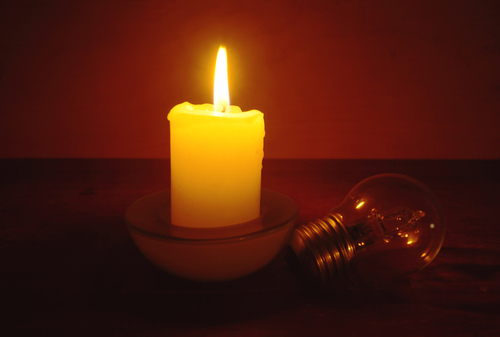Sizzling summer changes ideas about ‘peak’ demand hours

Blackouts triggered by a perfect “heat storm” in the west could have been worse, but they will nevertheless require utilities and state regulators to make some changes in how they plan for resource adequacy in the future as the climate continues to change, panelists said Wednesday during the remote annual meeting of the National Association of Regulatory Utility Commissioners (NARUC).
The mid-August outages were ordered as California and much of the west wilted under an intense heat wave. Thousands of utility consumers up and down the state were forced to endure hours with no electricity. The situation raised doubts among policymakers and in the media about the practicality of an increasing reliance on renewable energy. But within the utility industry, the situation focused on the assumptions that have guided the capacity planning for years.
“There a not a single root cause of the event,” said Mark Rothleder, COO for the California Independent System Operator (CAISO). “We identified a series of compounding conditions that led to us working too close to the ledge.”
Tumbling off the ledge came in the form of basic supply squeezes that resulted in CAISO not having enough electricity to go around as the entire region ratcheted up their air conditioning and kept it running hard into the evening, past the usual late-afternoon peak demand hours. Calls for voluntary conservation helped stave off a larger disaster, but it was an overall difficult stretch for grid operators in California as well as the Pacific Northwest and Southwest.
An Oct. 6 CAISO summary of the events determined that “an extreme heat storm” featuring temperatures as much as 20 degrees above normal blanketed the entire west between Aug. 14-19. Four of the five days were the hottest on record for August since 1985.
The climate change-induced extreme heat storm across the western United States resulted in the demand for electricity exceeding the existing electricity resource planning targets,” said the report; “The existing resource planning processes are not designed to fully address an extreme heat storm like the one experienced in mid-August.”
“The event didn’t cause any cascading blackouts, but there were a half-million customers who did lose power and created headlines of concern about how this happened,” said the panel moderator, Commissioner Ann Rendahl of the Washington Utilities and Transportation Commission.
Rothleder laid the blame on the simply sweltering conditions “that highlight that the resource planning process targeting a one-day and two-day load forecast do not sufficiently cover a heat storm like this that was a once-in-30 years event.”
Rothleder said power consumption numbers during the crisis pointed to the hours of 6 p.m to 7 p.m. as the “most challenging time in terms of meeting demand.”
“The net demand peak at 7 p.m. is the critical time,” Rothleder said. “That threw us over the edge in terms of meeting our reserve load.”
David Geier, who was also on the front lines as COO of San Diego Gas & Electric, said demand in Southern California remained firm past the late-afternoon hours when businesses traditionally begin closing for the day and temperatures tend to moderate. SDG&E operates a sizable solar capacity augmented by around 1,000 megawatts of rooftop solar, which begins to wane as sunset approaches.
“Our net demand peak was between five o’clock and seven at night,” he said. “Load is not falling off as fast as the solar is falling.”
Rothleder and other panelists said the idea of demand peaks extending past dusk into the evening non-peak hours – about the time when increasing numbers of electric vehicles start charging up for the following day – would require utilities and grid operators to adjust their planning strategies beyond the historical peak demand periods. “You are planning for the wrong hour,” he told the viewing audience. “You have to look at another set of hours that could also be critical.”
Ahmad Faruqui, a Principal at the consulting firm The Brattle Group, reminded the online audience that utility customers could become highly dissatisfied with their energy providers if they have to face increasing threats of outages and constant pleas for urgent conservation. “Just forecasting the peak is unproductive,” he said, “especially when the peak is changing.”
Moreover, utilities may have to think differently about meeting future demand in terms of not just hours and days, but in years. Cheryl LeFleur, former Federal Energy Regulatory Commission (FERC) commissioner and a member of the New England ISO board, told the panel “most of the planning tools we have now were developed in the ‘old world.’”
LeFleur urged considerations of longer-term supply arrangements, which include dispatchable natural-gas generation, and tailoring it closer to customer needs. “If we are going to have a lot of resources like solar, we have to also think about the demand side,” she said. Adjusting utility planning to meet the heat might sound like an argument for emphasizing reliable fossil-fuel power plants over renewables, but LeFleur said the changes to the climate would actually require deployment of more green energy resources and the development of market rules that will spur investments and get power to the market more efficiently.
“If anything,” she said. “I think the conditions that gave rise to the blackouts … stress the importance of decarbonization goals and the climate journey we are on.”
